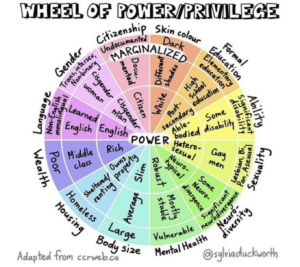How to Recognize & Manage
Unconscious Bias
By Ellen Choi, Assistant Professor, Toronto Metropolitan University
The Joint Commission, an organization dedicated to quality improvement and patient safety, found that implicit bias in health care settings can lead to measurable inequity. Examples abound: non-white patients, receive fewer cardiovascular interventions, less likely to receive a mammogram or pap test, and less likely to be admitted into hospital; non-white patients are less likely to be prescribed pain medications (non-narcotic and narcotic); and Black women are more likely to die after being diagnosed with breast cancer. In the workplace, racial discrimination in hiring practices have hardly improved over time. Since 1989, White applicants receive 36% more callbacks than Black applicants and 24% more callbacks than LatinX groups.
Our social behavior is driven by learned stereotypes that operate automatically (i.e., unconsciously) when we interact with other people. Untangling the influence of our automatic judgements from our conscious choices and behaviour requires a great deal of self-awareness, and self-scrutiny – the more uncomfortable, the better.
Understanding what biases exist and naming them when we notice their occurrence is one way of making explicit the intangible and rapid decisions that often unfold without our full awareness. The SEEDS model, for instance, has reduced over 150 cognitive biases into 5 main categories. Developing the awareness to call yourself out when these biases come into play can help you mitigate biases.
Similarity: The tendency to view people who look or think like us more favorably than people who are different
Expedience: The tendency to rush to conclusions in an effort to minimize cognitive effort
Experience: The tendency to believe that how we see the world is inherently truer than someone else’s perspective
Distance: The tendency to assign greater value to those things that we perceive to be closer to us, rather than further away
Safety: The tendency to over-account for negative outcomes instead of positive ones
Another invitation to enhance self-awareness is through understanding the intersectionality of your different identities and mapping them to the societal indicators of power and privilege.

But awareness alone isn’t enough. For individuals to be able to bypass the human tendency to protect their self-identity, they must develop a sturdy foundation from which to be able to look at oneself critically without spiralling into over ego identification (“why is this happening to me”), defensiveness (“I wasn’t doing that”), blame (“I can’t believe that’s how they interpreted that”, or shame (“I feel so guilty”).
One empirically supported way of being able to access to fresh insights and new beliefs is by shutting down the highly analytical part of our brain that attaches (often incorrect) narratives to make sense of our experiences and instead, pay attention to your actual senses in real time.
The next time you find yourself in a situation where you would like to meet moments of unconscious bias with greater consciousness, try these 5 steps.
- Stop: Pause what you’re doing and notice what you’re thinking and feeling.
- Feel: Pay attention to physical sensations in your body, sounds, tastes, your body’s position in space – anything that is sensory oriented and happening in the “now”.
- Gratitude: Take a moment to cultivate a genuine sense of gratitude in your thoughts, feelings, and body.
- Loving-Kindness: Send a compassionate thought out to all living beings and remind yourself that they, just like you, wants to be happy and free. If compassion is too much of a stretch, say something that’s true and neutral like “we are not seeing eye to eye right now and that is hard”.
- Presence: Return to the tasks of the day and stay connected to the presence you cultivated in this practice.
